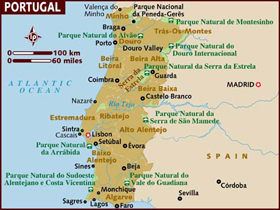Pharmacoeconomic Guidelines: Portugal
Country/Region: Portugal
Key Features
| Key Features | |
|---|---|
| Type of Guidelines | PE Guidelines |
| Title and year of the document | Methodological Guidelines for Economic Evaluation Studies of Health Technologies (2019) |
| Affiliation of authors | INFARMED / ENSP, UNL / University of York / University of Lancester / University of Algarve / University of Minho |
| Purpose of the document | To guide the development of economic evaluation studies and the appraisal of the economic evidence submitted by companies. |
| Standard reporting format included | Yes. |
| Disclosure | Yes. |
| Target audience of funding/ author's interests | Companies in preparing the evidence to be submitted to the INFARMED, I.P., and by the independent experts in appraising the evidence submitted. |
| Perspective | National Health Service (NHS) |
| Indication | Target therapeutic indication |
| Target population | Entire target population, as defined in the scope of the pharmacotherapeutic evaluation and considered in the pharmacotherapeutic recommendation by the Health Technology Assessment Commission (CATS). |
| Subgroup analysis | Relevant subgroups, as defined in the scope of the pharmacotherapeutic evaluation and considered in the pharmacotherapeutic recommendation by CATS. |
| Choice of comparator | All other healthcare options relevant to the disease or clinical condition in focus, as defined in the scope of the pharmacotherapeutic evaluation and considered in the pharmacotherapeutic recommendation by CATS. |
| Time horizon | Should be adequate to include time during which costs and consequences attributed to treatment occur. |
| Assumptions required | Yes. |
| Preferred analytical technique | Cost-utility analysis |
| Costs to be included | Health care resources to be considered must be aligned with the NHS perspective, i.e., only costs accruing to the NHS budget must be considered. Detailed information on the healthcare resources used (measured in physical units) and how they are valued (unit prices or costs) should be reported separately. |
| Source of costs | Direct data collection, national published sources, or expert panels |
| Modeling | The submission should include a full description of how the model reflects the natural course of the disease and the impact of treatment(s) on the disease, health outcomes and health costs. The choice of modelling approach should always be justified. If it is possible and reasonable to apply different approaches, it is preferable to implement the simplest approach (parsimony principle). |
| Systematic review of evidences | Evidence that relates to model parameters and assumptions should be identified using a systematic and explicit process, and the quality and appropriateness of each source for the context of care should be carefully considered. |
| Preference for effectiveness over efficacy | Yes. |
| Preferred outcome measure | Quality-Adjusted Life Years (QALYs) |
| Preferred method to derive utility | EQ-5D-5L with Portuguese tariffs. |
| Equity issues stated | Not stated. |
| Discounting costs | 4% per year |
| Discounting outcomes | 4% per year |
| Sensitivity analysis-parameters and range | All stochastic model parameters should be considered uncertain. The type of distribution used to describe uncertainty should be dictated by the nature of the parameter and/or any associated assumption used in the estimation method. The extent of correlation between individual parameters should be considered and reflected in the probabilistic sensitivity analysis (PSA). Any correlation could be an uncertainty parameter, itself. Formal ways to deal with correlation include the Cholesky decomposition of the variance-covariance matrix or the paired use of simulations obtained by Monte Carlo method via Markov Chains. The values chosen for distribution parameters should be presented, explained and justified with reference to the supporting evidence and any assumptions used. |
| Sensitivity analysis-methods | Scenario analysis, probabilistic sensitivity analysis (PSA), expected value of perfect information (EVPI), univariate and multivariate sensitivity analysis. |
| Presenting results | The results should be reported as ICERs. |
| Incremental analysis | Required. |
| Total costs vs effectiveness (cost/effectiveness ratio) | Required. |
| Portability of results (Generalizability) | Yes, the origin of the data used and the hypotheses adopted should be clearly specified. |
| Financial impact analysis | Required. |
| Mandatory or recommended or voluntary | Mandatory |
Acknowledgement:
